A Step-by-Step Guide to Creating Your Urban Buddha Garden
buddhaindooroutdoor.com participates in the Amazon Services LLC Associates Program, an affiliate advertising program designed to provide a means for sites to earn advertising fees by advertising and linking to Amazon.com.
In the middle of noisy streets, there’s a chance to find calm. An Urban Buddha Garden brings peace like the traditional Japanese Zen gardens. It’s a spot for quiet and self-reflection, making it perfect for city life.

An Urban Buddha Garden uses natural materials like rocks and neat gravel. By adding a bit of green, it’s a place of peace and focus. It’s not just placing stones and plants.
It’s about creating a simple yet harmonious space. This guide shows a simple way to make an urban garden a beautiful and calming place.
Embracing Zen Principles in Your Urban Oasis
Adding Zen principles to your urban garden turns it into a calm oasis. It makes your space more mindful and serene. The principles of Koko austerity, Kanso simplicity, and Shizen naturalness are key. They help create a tranquil place where nature and peace come together.
The Essence of Koko: Embodying Austerity
Koko austerity means less is more. It focuses on the simple beauty of fewer things. This Zen principle helps your garden be elegantly simple. It creates a peaceful setting for thinking and feeling more connected to your surroundings.
Kanso: The Art of Simplicity in Design
Kanso simplicity highlights clean and clear designs. It makes your garden look beautiful and feel calm. This design is perfect for quiet meditation and unwinding.
Shizen: Infusing Naturalness Into Your Space
Shizen naturalness makes your garden feel like a part of nature. Your space becomes organic and peaceful. Using natural materials and local plants makes it an Eco-friendly haven in the city.
With these Zen principles, your urban area becomes a balanced, peaceful place. It mirrors the beauty of Zen and helps with a calm and mindful life. Turn your space into a place that nurtures mental health and a love for nature.
Understanding the Cultural Roots of Zen Gardens
The link between Zen gardens and Buddhist spirituality runs deep in Japan’s history. They first appeared during the Muromachi Period by Buddhist monks. These monks created them to be places for deep thought and meditation.
In a Zen garden, every rock and carefully raked line in the gravel has a special meaning. They symbolize the world in a simplified way.
For example, rocks can represent mountains and gravel rivers. This approach reflects a broader natural scenery. It’s designed to simplify nature into something that promotes peace and deep thinking.
Places like the Ryōanji and Tenryūji temples show the deep thought put into these gardens. They’re more than just beautiful spots for visitors. They stand as spiritual places, reflecting the ideas of Zen Buddhism. Features like bridges mark the transition into a space where nature and mindfulness come together perfectly.
The beauty of these gardens is based on ancient principles. These include valuing the beauty of simplicity and aged items. Each garden showcases these ideas through its design. This design aims to shift visitors’ thoughts from everyday worries towards peace and a spiritual feeling.
The Karesansui, or dry landscape garden, is a perfect example. It uses rocks and sand to create a world that feels spiritual.
By adding elements like moss and trees, these gardens become peaceful spaces. They invite visitors to experience a state of calm and beauty.
By learning about the cultural roots of Zen gardens with resources on Japanese Zen gardens, we can better understand their role.
Historically, these gardens serve as sacred places to meditate on Buddhist teachings. They offer a visual and practical journey towards enlightenment, mirroring the calm and thoughtfulness of their surroundings.
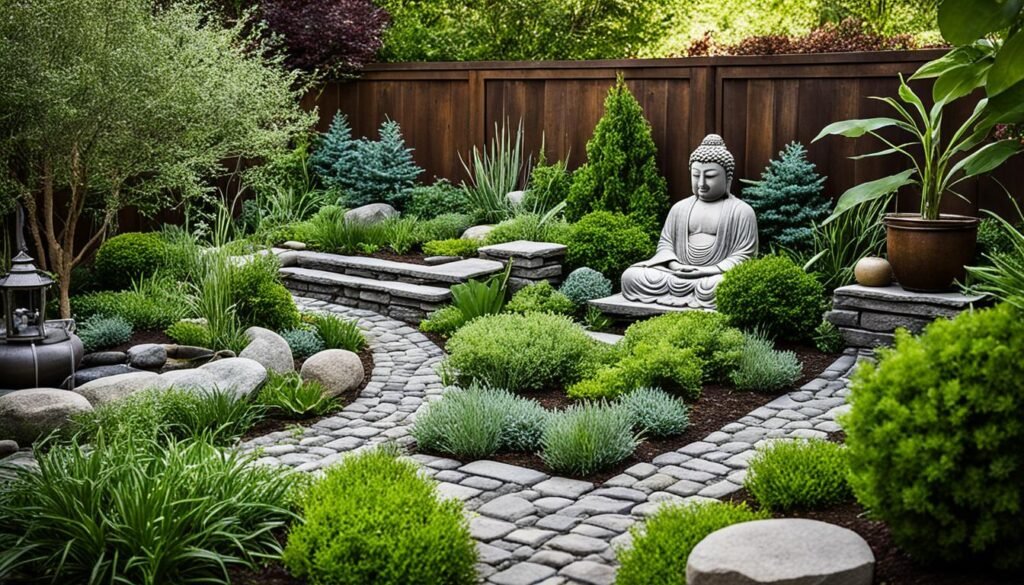
Designing Your Urban Buddha Garden
Starting to design your Urban Buddha Garden is exciting yet thoughtful. It changes a boring city spot into a calm, modern garden. This space is perfect for yoga and meditation, turning your neglected area into a peaceful retreat with every design choice.
Selecting the Ideal Spot for Tranquility
First, choose the best place for your Urban Buddha Garden. Look for a spot that blocks out the city’s noise and catches natural light. It must be calm and private, perfect for relaxing and focusing on yoga or meditation.
Sketching Your Urban Buddha Garden Layout
After picking a spot, draw the garden’s layout. Start turning your idea into a real design. Think of a layout inspired by Zen, focusing on balance and simplicity.
Include few plants, some rocks, and smooth sand for a serene, spiritual look. Choose these elements carefully to match your tastes and your urban space’s limits.
Preparing the Foundation with Mindful Materials
Foundation work for your Urban Buddha Garden is critical. Pick materials that feel natural to create a sustainable, harmonious garden. Use local stones, Eco-friendly sand, and green options for garden borders.
These mindful choices make your garden fit in with the environment. They help your garden thrive in the city, in harmony with nature.
Think about the location, draw a balanced layout, and pick the right materials. Your urban space will turn into a beautiful, peaceful garden. Each choice brings your Urban Buddha Garden closer to being a tranquil place in the busy city.
The Role of Rocks and Gravel in Symbolism and Aesthetics
In the realm of minimalist urban design, Zen gardens are key. Rocks and gravel aren’t just for looks. They have deep meaning in symbolism in Zen gardens. This brings a sense of calm and reflection to the landscape.
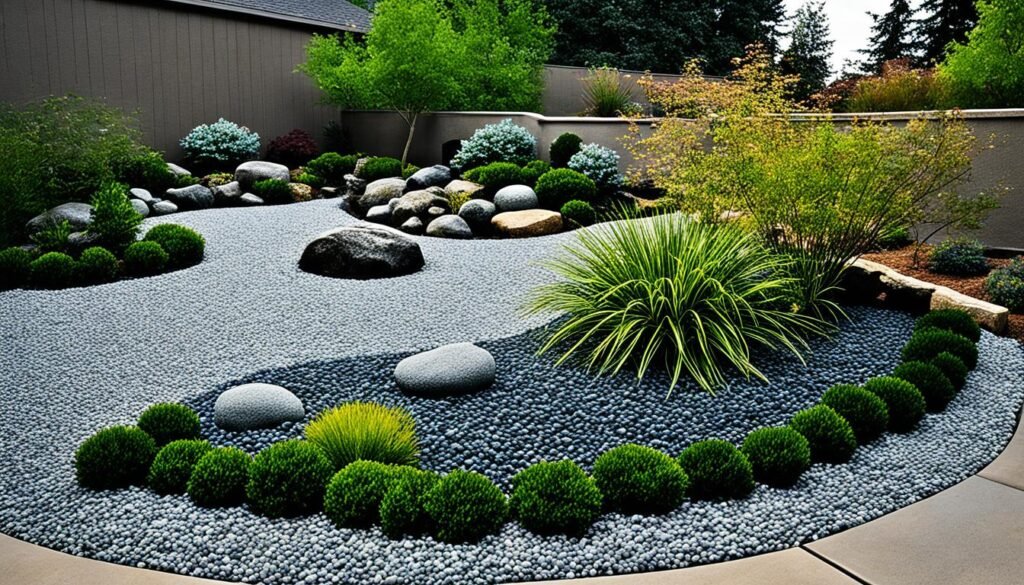
Rocks in Zen gardens can look like mountains, islands, or animals. It all depends on how they’re shaped. Gardeners place them carefully to show nature’s strength and lasting spirit.
Gravel, meanwhile, acts like water. Raked into patterns, it reminds us that life always changes. This reflects a key Buddhist idea, that everything is impermanent.
The look of a Zen garden, using rock garden aesthetics, is unique. It mixes calm, ordered designs with wild, unpredictable nature.
This blend shows the Zen idea of balancing structure and freedom. Zen gardens are like art, telling deep stories with a glance. They invite thoughts and peace, pulling us away from stress.
- Rocks: Stability and permanence
- Gravel: The flow and transient nature of life
Adding these elements to your minimalist urban design brings more than beauty. It creates a place where every rock and grain of gravel leads to peace. They offer a way to step back and reflect in our busy lives. Urban spaces become oases of calm and introspection, helping us cope.
Incorporating Plants and Water Features for a Dynamic Balance
To create a dynamic balance in your Urban Buddha Garden, pair plants and water elements carefully. This combo boosts your outdoor meditation area’s beauty.
It also amps up the peaceful feel and looks of your garden. A good mix helps make a calm space where you can just be and reflect.
Choosing Plants that Enhance Serenity In An Urban Buddha Garden
Choosing the right plants is key to a calm garden. Pick ones that look good and are low-maintenance. Ferns, bamboo, and hostas fall into this category. They need little looking after. This ease means less stress for you and a great area for peace and thought.
Creating Movement with Water Elements
Adding water elements brings life and sound to your space. This might be through ponds, fountains, or flowing water. They represent constant change, enhancing the calm. Plus, water sounds can cover up city noises, making your space even more peaceful.
Adding Moss for Lushness and Depth
Moss is great for making a Zen garden look full and textured. Its green softness balances the garden’s hard features. Like rocks and gravel. Moss also adds a natural, old feel. This fits the Zen garden vibe perfectly.

By wisely bringing in plants and water, you improve your Urban Buddha Garden’s vibe. This balance helps you feel closer to nature. It’s the perfect scene for meditation and peace in the open air.
Maintaining Harmony in Your Urban Buddha Garden
Keeping your Urban Buddha Garden peaceful is key for it to be a top urban mindfulness retreat. It’s more than just a sometimes job. You need to always care for it, weaving this into life in the city. Here’s how to keep your quiet spot among the city buzz.
The gravel and rocks, the garden’s framework, can be very calming. Raking them often makes the garden look nice. It also helps refresh your thoughts, which is good for inner peace and to stay in tune with nature.
- Inspect and clear debris from gravel and rock arrangements to ensure they are always pristine.
- Rake the gravel to maintain its intricate patterns which symbolize water ripples or waves, instilling a sense of peace and movement.
Caring for plants in your little city haven is also very important. Pick plants that need little upkeep to fit your Zen garden’s simple style. Looking after these plants can be like meditating. It helps you stay mindful as you watch your garden grow and change.
- Regularly prune and monitor the health of plants to avoid overgrowth and maintain visual balance.
- Ensure adequate watering based on the season and the specific needs of your plant selections.
It’s also good to be mindful in how you keep the garden clean and its layout nice. Regular checks and tweaks to any accessories, like stones or water features, can keep the balance feeling right.
- Regularly clean any water elements like fountains or ponds to prevent algae formation and maintain water clarity.
- Assess and refresh the arrangement of stones or other elements to ensure they are in harmonic balance.
Working on your garden this way does more than keep it pretty. It makes you feel more connected to your space. This ongoing mindfulness helps your mind and body stay healthy.
Your urban Buddha garden is not just any place. It’s a peaceful, breathing spot of calm. Learn more about creating your Zen space at Zen Garden Landscaping.

Finding the Right Buddha Statue for Your Sanctuary
Creating a serene and inspirational space in your urban garden involves more than just selecting plants and arranging stones—it also includes choosing the right Buddha statue. The right statue not only looks nice but also helps create a peaceful area for meditation and contemplation.
Positioning Your Buddha Statue: Vastu Considerations
According to Vastu, where you place your statue matters for bringing in positive energy. Feng Shui experts often say that a bigger Buddha can invite more good luck. They suggest putting it in certain spots, like toward the door or in the living area.
If you want more details on where to place a Buddha statue, check out this guide.
The Symbolism of Different Buddha Poses
Each Buddha pose has its own meaning based on the Buddha’s teachings and experiences. For example, a Buddha statue sitting and meditating stands for peace and reaching enlightenment.
Meanwhile, a Buddha standing up symbolizes bravery and protection. Choosing a Buddha statue is more than just for looks—it’s about connecting to a spiritual path.
Sourcing Authentic and Ethical Buddha Statues
It’s crucial to get your Buddha statue from sellers who care about the cultural background. This ensures the statue is made with cultural traditions in mind and that the people making it are treated fairly. By choosing ethically made statues, you keep the spirit of your urban garden genuine and respectful.
Putting a Buddha statue in your garden means more than adding beauty. It also brings peace and spirituality. Following Vastu principles and understanding what each Buddha pose means, alongside picking your statue carefully, turns your garden into a place that nurtures your inner self.
Personalizing Your Urban Buddha Garden Design
Creating a personalizing urban Buddha garden is more than looks. It’s about making a space that really speaks to you. It becomes your own peaceful spot in the city. This process lets you add things that bring peace and tranquility to you.
Think about these tips to make your area truly calming:
- Choose Your Buddha Statue Wisely: Picking the right Buddha statue sets your garden’s tone. A Reclining Buddha gives a chill vibe. A Standing Buddha offers a sense of respect and tradition.
- Select Meaningful Accents: Add personal items, wind chimes, or special stones. They make your garden uniquely yours. These items can also be great for focusing during meditation.
- Decide on Plant Varieties: For urban spaces like those in Hanoi, think about what plants would fit. Choose plants that are easy to care for if you’d rather meditate than garden.
But urban retreat customization isn’t just about the physical garden. It also builds a vibe where everything works together for peace and focus. This turns your garden into a personal sanctuary in the city.
From a calming water feature to wisely placing your Buddha statue, every detail is key. It all helps shape the ideal retreat for you.
Creating your urban Buddha garden is a deep task. It doesn’t just make a space pretty. It forges a strong connection with your surroundings. By choosing with care, your garden truly reflects your inner calm and supports contemplation.
Creating a Contemporary Tranquil Garden Space for Meditation and Yoga
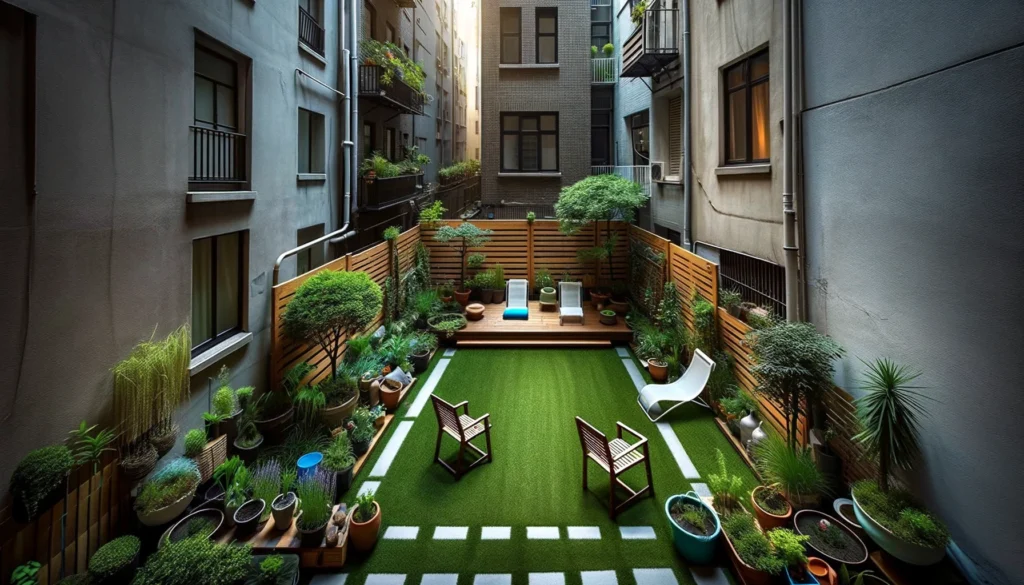
In today’s fast-paced world, finding a peaceful spot for yoga or meditation matters a lot. It’s key for our mind’s well-being.
Many people who live in cities love to garden. They say it helps them relax. A meditation garden design blends plants and special spots to rest. In this green space, you can escape from city life. Your yoga sanctuary in the city can cut stress by 40%.
Gardening or quiet meditation – people pick what suits them best. Every detail in your tranquil garden space matters. Simple looks and a nice view make it 30% calmer.
Adding solar lights can make it even better for night meditation. A perfect garden can be the best place to relax and think.
Yoga lovers get a boost from extra-thick mats. They make your practice comfier. Beautiful paths and wooden borders add a mindful touch. They make you feel more part of the garden. Plants like lavender calm you down. They make your garden even more peaceful.
Conclusion To Creating Your Urban Buddha Garden
Creating a contemporary tranquil garden space for meditation and yoga can transform your outdoor area into a peaceful oasis.
Incorporating elements of modern Zen decor and urban garden design can provide a serene environment that promotes relaxation and mindfulness.
By carefully selecting the right plants, including calming varieties such as lavender, and adding beautiful paths and wooden borders, you can create a space that invites tranquility and harmony.
When designing your contemporary tranquil garden, consider incorporating elements that enhance your connection with nature.
Integrate natural materials like wood, stone, and bamboo into the design, as these materials evoke a sense of calm and harmony.
By using these elements for paths and borders, you create a mindful experience every time you walk through your garden.
Source Links
- https://www.planetnatural.com/zen-garden/
- https://www.tuttlepublishing.com/japan/inside-your-japanese-garden
- https://urbandesignlab.in/zen-garden-landscaping/
- https://housingprototypes.org/the-influence-of-buddhism-on-urban-planning/
- https://www.asianstudies.org/publications/eaa/archives/cultivating-enlightenment-the-manifold-meaning-of-japanese-zen-gardens/
- https://www.buddhasgardenllc.com/our-products-foster
- https://www.wodongaplantfarm.com.au/2023/07/27/zen-garden-water-features-finding-serenity-at-home/
- https://www.waterfeaturesadore.com.au/collections/buddha-water-features
- https://templesandmarkets.com.au/blogs/southeastasiastories/7-good-places-to-place-buddhas-in-your-home
- https://wasteisafailureofdesign.com/2021/04/30/micro-farming-in-vietnam-urban-area/
- https://www.arturbanstatue.com/product-detail/buddha-garden-statue/
- https://marblising.com/9-types-of-styling-for-buddha-statues-outdoors-and-indoors/
- https://spirituallifemedia.com/how-to-create-a-meditation-garden-to-reduce-stress-and-increase-peace/
- https://www.suburbia-unwrapped.com/tips-for-creating-a-meditation-garden/
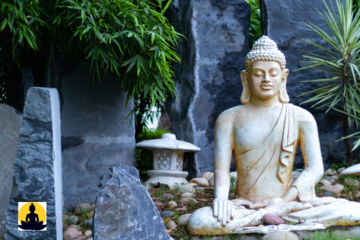
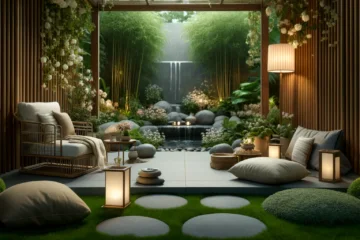

0 Comments